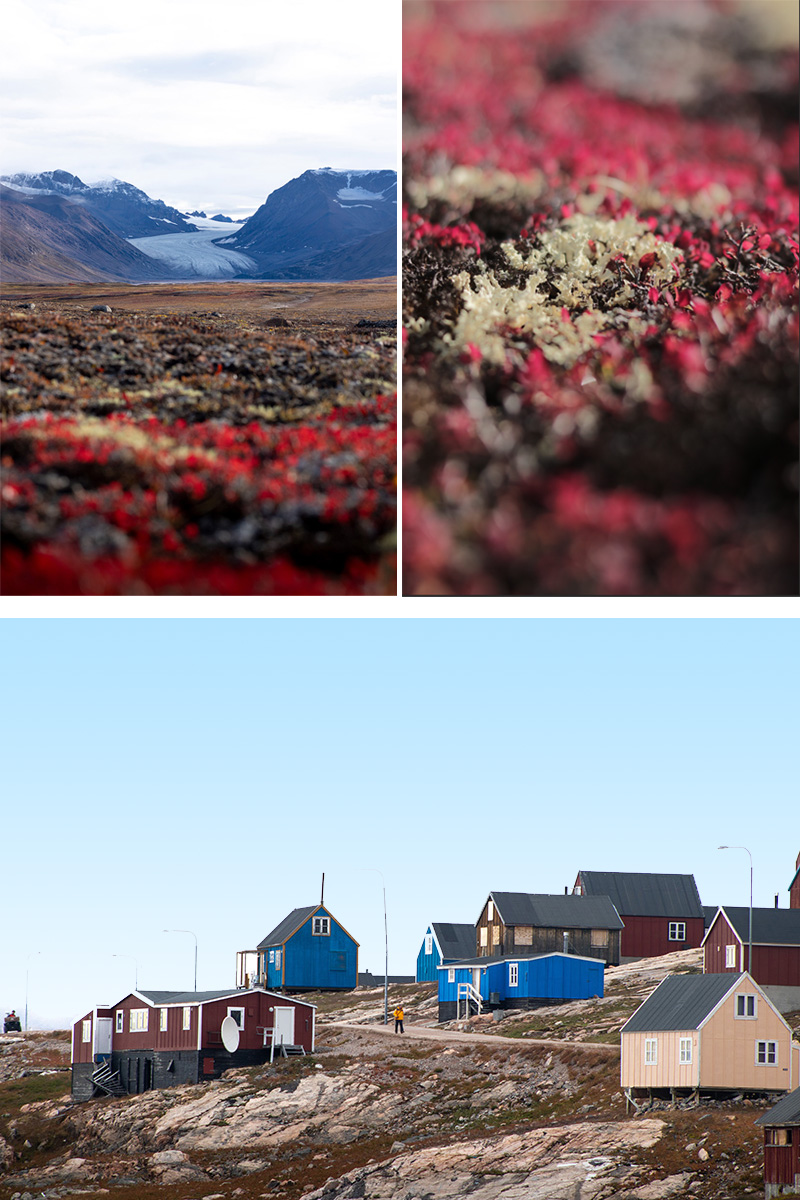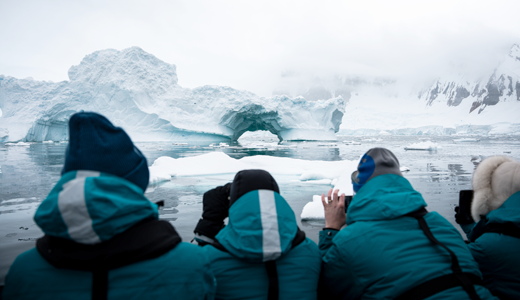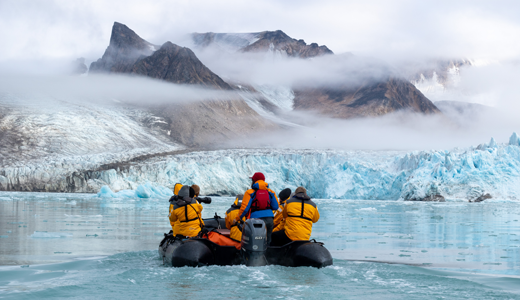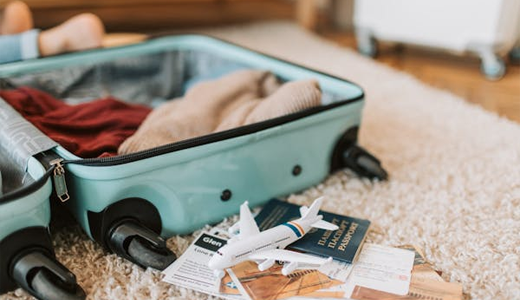Three Arctic Islands Expedition - A Voyage Like No Other
with Epic Polar - via Quark ExpeditionsBiologist and full time traveler Maysa Santoro shares her experience of traveling to the Arctic onboard a Quark Expedition vessel Ocean Adventure with Epic Polar
Visiting the Arctic is like opening a window to a new environment never yet seen anywhere else in the world before.
The arctic landscape is characterized by year-round permafrost, a phenomenon exclusive to the polar regions, where deeper ground is permanently frozen and where only the surface thaws for a short period in the summer.

Our journey began on Aug 27 in Spitsbergen - Svalbard and ended on Sept 9 in Iceland, visiting three arctic islands and spending 14 days in the Arctic Ocean.
1) SPITSBERGEN-SVALBARD
Spitsbergen-Svalbard is one of the northernmost landmasses on the planet, and considered the largest area of wilderness in Europe. Full of wildlife and imposing mountains, the alpine scenery with its pointed peaks gives the island its name.



Our voyage departed from Longyearbyen and within only a few hours cruising, the expedition team announced: Fin whales by the starboard side!
We saw at least 10 of them, actively feeding close to the ship.
Fin whales are the second largest of all baleen whales, getting up to 24m long! It's a migratory species that spends the summer months in higher latitudes for intensive summer feeding. It was definitely a great way to start our time in the Arctic!
The next day was officially our very first day exploring the archipelago with the zodiac. Our location was Gullybukta, where we landed and had a magical encounter: walruses resting by a beach with a blue glacier and mountains in the background. I couldn't believe my eyes; there were at least 20 of them almost overlapping each other on top of the sand. It looked like one of those impressive nature documentaries that we see on the television, but better yet, it had temperature, smells and perspective. Their sound was loud, and seeing them interacting with each other was a blast. Walruses are the largest seal species in the Arctic and looking at them with respect and within a safe distance was a gift.


AECO (Association of Arctic Expedition Cruise Operators)
Speaking of respect, Svalbard, another name for Spitsbergen, is especially vulnerable to the influence of human beings. First, because this ecosystem is relatively simple. For example, there are only 3 species of mammals on land: Arctic fox, polar bear and reindeer. Apparently, this can make this area more unstable than complex systems with many species and large production. Second, low temperatures and a short growing season cause slower biological and biochemical processes.
That is why we as visitors receive guidelines even before embarking on the voyage, which come with responsibilities and basic principles: we are not to disturb any wildlife, or pick any flowers, rocks or any organic objects. We must wash our boots with soap on the way in and out of the ship, and respect the local culture and people.
Is worth mentioning that the operator, Quark Expeditions, is part of the AECO, which is committed to responsible, environmentally-friendly, and safe cruise tourism in the arctic. Members of AECO strive to set the highest possible tourism operating standards and to educate visitors about the Arctic.
Kapp Waldburg: Kittiwakes and the Arctic Foxes



The Arctic is seasonally home to some of the largest seabird populations in the world. 183 species breed in high latitudes, taking advantage of the short but immensely productive summer season of insect abundance.
On the east side of Svalbard, we found a place called Kapp Waldburg, known for receiving hundreds of Kittiwakes birds in the summer months for nesting. This of course attracts its predators, such as polar bears and Arctic foxes. We were lucky enough to see foxes trying to hunt, and resting right in front of us and their prey!
They’re very well adapted to Arctic conditions with their short snouts and round ears, and with an extremely thick winter fur, undercoat, and long cover hairs, they can stay warm and toasty through the cold wintery days of the Arctic.
POLAR BEAR


The time has come. One of our biggest expectations of the whole trip was definitely to see this apex predator and we did many times! Here in Svalbard, they have been protected since 1973 and there are estimated to be 3,000 of them, so it was not so hard to spot them from the boat during our navigation around the archipelago.
However, one of these times was unique; we spotted a polar bear up on a hill, resting by the mountain. From the zodiacs, we were able to move in and observe it up-close with our own eyes.
2) GREENLAND




Two days sailing from West Svalbard to East Greenland, Beaufort Scale on a 9 out of 12, and we made it to the most beautiful scenery I've ever seen in my life! Icebergs everywhere, blue skies and happy people. We were all feeling so lucky to be there!
Greenland is the world’s largest island, 90% of which is covered by ice. Its ice sheet stretches almost 1000 miles from north to south and is 600 miles east to west, therefore is also considered one of the remote wonders of the world.
Bjorneder was far and away the most beautiful place I've ever visited in my life.
Not only did we see icebergs combined with big mountains, but we were lucky enough to spot the gentle giant species of Greenland, the Musk Ox!

Endemic to the Arctic region, they stand four to five feet (1.1 to 1.5 m) high at the shoulder, and some males weigh up to 900 pounds (410 kg). Females weigh less than males, and the average weight of a musk ox is a hefty 630 pounds (285 kg).
Both male and female musk ox sport long, curved horns, a shaggy coat of extremely thick hair, and impressive trailing beards.
In fact, the Greenlandic name for musk ox is “Umimmak,” meaning “the long-bearded one."
Arctic Tundra and a Local Community


Landing in Greenland is a great opportunity for us to learn more about the vegetation from a polar region. Due to the permanent frozen soil, plants can't root more than 30cm deep, so all we could see were small plants the size of a grass.
It also was a great opportunity for us to get to know Ittoqqortoormiit, the most isolated town in Greenland, with only 350 inhabitants. A few things got my attention here; first, the building color, being red for churches and shops, green for radio communications, blue for factories and fish plants, yellow for hospitals and black for police. Second, they only get their supplies twice a year, other than that, they rely on hunting for food and clothing. It is quite difficult to imagine how they manage to live there in the winter, 4 months with no sunlight and meters of snow every day outside their house.

On this journey through Greenland, we were lucky enough with the weather to be able to hike with such clear panoramic views. On one of our hikes, we could see where the nomadic explorers used to build their tents in holes in the ground to protect from winter, and more Arctic species close by. Arctic hare (Lepus arcticus) was one of them. This is a mammal highly adapted to living in the Arctic tundra and other icy biomes. The Arctic hare looks like a rabbit but is larger, has shorter ears, and can thrive in extreme cold. They do not hibernate, but sport thick fur and enjoy a low surface area to volume ratio that conserves body heat, most evident in their shortened ears. These hares sometimes dig shelters in snow, huddle together to share warmth, and also change their skin color to bright white for camouflage against predators.
3) ICELAND - LAST BUT NOT LEAST

One day navigating from Greenland, we made it to the western side of this beautiful island! As soon as the ship anchored at 7am on Sept 8th, we looked from our bedroom windows at what is called Möngufoss, a magnificent waterfall in the middle of nowhere.
As was the whole trip until this point, it was only us and nature.
3) A VOYAGE LIKE NO OTHER

The zodiac cruise was our moment of peace. We knew that when we were cruising, everything that didn't really matter at the moment was about to give space for our presence, our eyes and our minds to enjoy and learn from these encounters.
This fragile ecosystem plays a key role in maintaining the health of the global environment. Ice reflects solar energy in the form of light, helping to cool the planet. Glaciers and icebergs in the Arctic account for about 20% of Earth's fresh water supply. Being here, feeling the cold breeze, gives us another perspective: we feel like we belong, like we are part of the process. The Arctic Islands Expedition is for all of us who want to immerse into spectacular landscapes of one of the most remote places on the planet!
For instance, the preservation of permafrost protects polar ecosystems, reduces carbon emissions, and provides scientists with rich material to study. But, when global air temperatures rise, permafrost can turn into a carbon dioxide emitter, releasing viruses and bacteria, and discharging mercury into our waterways and ocean.
I might have gone alone, but I found like-minded people and collected new memories of a lifetime.
It was a voyage like no other.





